
EUROSEA “European Interregional Committee for the development of innovative Energy–Environment Systems”,
EUROSEA Committee for Neutron Capture Therapy by means of Compact Neutron Generator
Recent advances in Neutron Capture Therapy
The recent techniques of protein synthesis, together with the progress of biological knowledge on the structure of neoplastic cells and the improvement of microdosimetry methods have provided a remarkable contribution to the development of the Neutron Capture Therapy (NCT).
This novel technique can be applied to the treatment of some types of tumors which give an unsatisfactory reaction to conventional medical treatments (traditional radiotherapy and chemotherapy).
More recently, the NCT allows to obtain an improvement of the quality of life for the patient, a general extension of the life expectation of the treated patients and in some cases the complete healing (for example the technique of the autotransplantation applied for liver metastasis in Pavia, Italy [1]).
This article contains the preliminary description of a Facility based on a Compact Neutron Generator (CNG) for NCT applications into the hospital environment.
In 2001, an agreement between the Italian non-profit association EUROSEA Committee (based in Turin) and Lawrence Berkeley National Laboratory (LBNL) for the development of a prototype of CNG for medical uses. The Plasma and Ion Source Technology Group at Lawrence Berkeley National Laboratory (LBNL) – California USA – has been developing for over 10 years the design several CNGs for medical and industrial applications based on the nuclear fusion reactions.
At the end of 2004, thanks to Compagnia di San Paolo funding, a prototype called EUROSEA001 was installed and tested at the Experimental Physics Department of the Turin University.
The neutron source
Fusion-based sources, which exploit fusion nuclear reactions of light elements to produce elementary particles as neutrons, are promising devices with wide application field which ranges from radiotherapy, to clinic diagnostics, radioisotopes production and radiography for industry and security.
Nuclear fusion reactions among deuterium or tritium nuclei are exploited in fusion-based accelerators for the production of neutrons (Fig. 1). The deuterium ionized atoms (D+) or tritium (T+) are accelerated in the vacuum chamber until they hit a titanium target making fusion reactions with previous impinged D+. From the fusion reactions fast neutrons of energy 2.45 MeV (or 14.1 MeV in the case of tritium) are emitted, suitably slowed down and addressed toward the utilization region for medical and industrial applications.
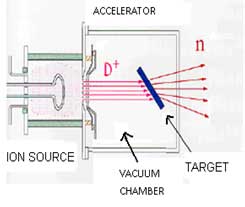
Fig. 1. Conceptual scheme of a fusion based neutron source for the production of neutrons.
The CNG prototype EUROSEA 001
The prototype EUROSEA 001 (see figure 2) is basically composed of three main elements:
The main characteristics of the prototype are:
-
high compactness (dimensions do not exceed 50 cm.);
-
safety (neutron production is stopped when the electrical supply is turned off);
-
simplicity of assembly and operation throughout the life cycle.
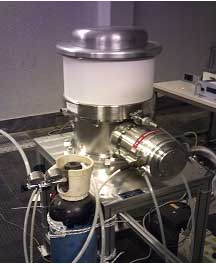
Fig. 2. Compact Neutron Generator EUROSEA 001
Layout of a NCT facility for Hospitals
In figure 3 is shown a simplified scheme of CNG Facility for hospital applications.
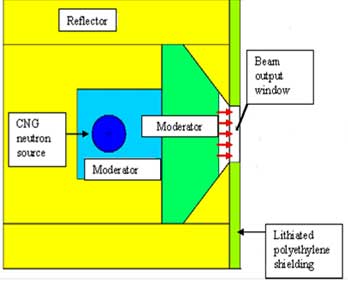
Fig. 3. Simplified scheme of a facility for the hospital application of NCT
The moderator and reflector allow to limit leakage and slow down neutrons, optimizing their energy in order to irradiate the tumoral mass.
Figure 4 shows a three-dimensional image of a Facility for the application of NCT in hospitals. This Facility, equipped with the shields and the safety devices, should be installed in a conventional radiotherapy unit.
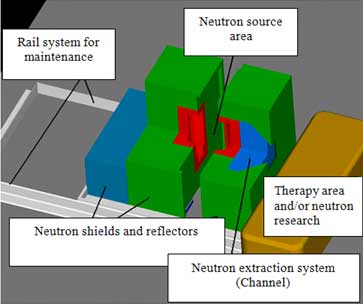
Fig. 4. Facility for the therapeutic application of NCT (artistic view)
The Facility is flexible and, using different Beam Shape Assemblies (BSA), is possible to treat different neoplasias.
In figure 5 is showed an example of layout of a radiotherapy unit involved in the application of NCT with the use of CNG Facility.
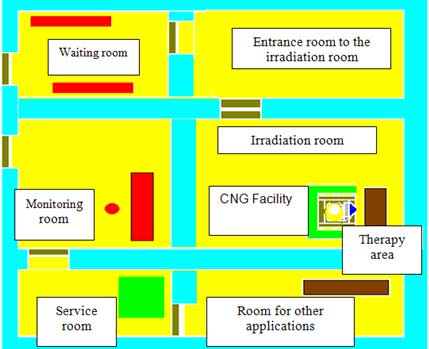
Fig. 5. Layout of a radiotherapy unit based on a CNG Facility
Montecarlo simulations and conclusions
An extensive set of MCNP simulations showed that using the CNG EUROSEA 001 coupled with a suitable Beam Shaping Assembly (BSA).
Calculations show that it is possible to perform NCT in hospitals both using thermal neutron flux with the autotransplantation technique and using epithermal neutron flux for in situ deep tumors.
Using a CNG similar to EUROSEA 001 with 2 x 1012 n/s neutron yield [2], coupled with a suitable BSA, it is possible to obtain an epithermal and thermal neutron flux matching all the parameters for the application of NCT to in situ deep tumors [3].
References
[1] S.Bortolussi and S.Altieri, Thermal Neutron Irradiation Field Design for Boron Neutron Capture Therapy of Human Explanted Liver, Medical Physics, December 2007 Vol. 34, Issue 12, pp. 4700-4705.
[2] S. Custodero, K. Leung, F. Mattioda, Feasibility Study for the Upgrade of a Compact Neutron Generator for NCT Application, ICNCT 13, International Conference on Neutron Capture Therapy, 2-7 November 2008, Florence – Italy
[3] S. Custodero, F. Mattioda, Thermal Neutron Flux for NCT Application by means of Compact Neutron Generators, ICNCT 13, International Conference on Neutron Capture Therapy, 2-7 November 2008, Florence – Italy
Contact for EUROSEA: www.eurosea.org, eurosea@envipark.com,
Salvatore Custodero, Fulvio Mattioda and Mara Mollo
|

